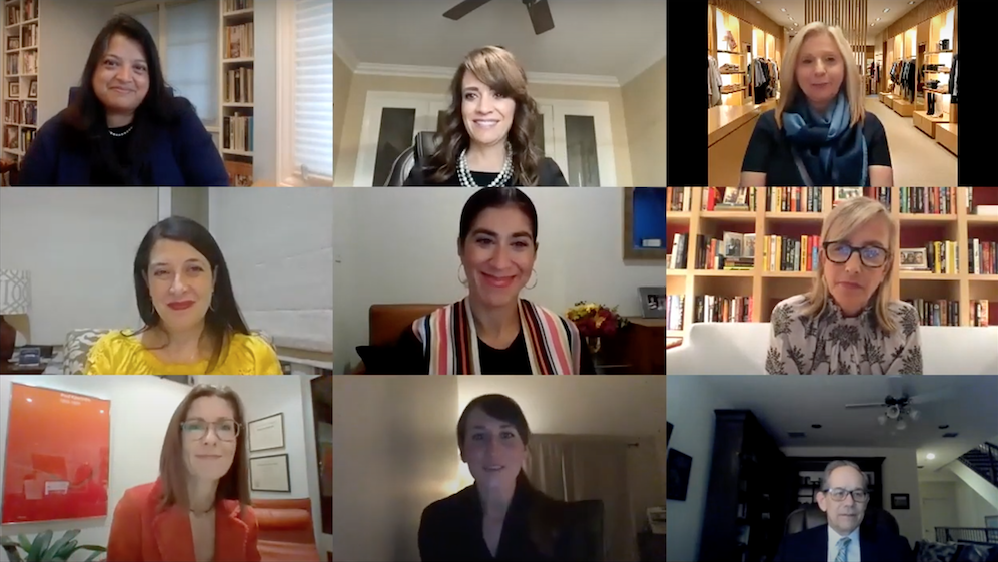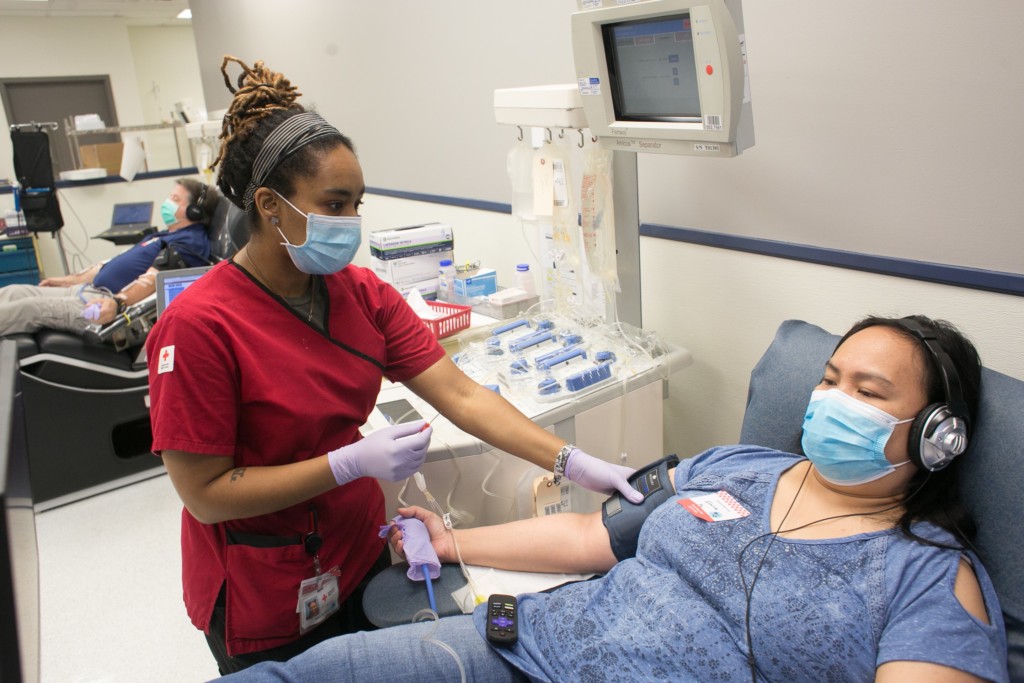As we turn our backs on what will be remembered as one of the most trying years in our collective memory, many are reflecting on all the need that arose in 2020 and giving thought to how to align money with mission, maximize impact, and establish or refine a family philanthropy strategy for the new year.
In celebration of National Philanthropy Day, Make It Better Media Group held a special virtual event presented by Bank of America Private Bank that brought together an expert panel of philanthropic strategists and wealth advisors along with leaders in the nonprofit sector to discuss topics that included the current state of the nonprofit and social sector, donor pivots, mission alignment, giving through an equity lens, and much more. Here are 11 key takeaways to bring to your 2021 financial strategy.

1. The pandemic continues to strain the charitable sector, particularly organizations serving and led by people of color, at a time when their services are most needed.
“There is overwhelming need and fundraising challenges with an estimate of one in nine nonprofits facing closure,” says Misti Sangani, Senior Philanthropic Strategist, Bank of America Private Bank, in a conversation with her colleagues, Patricia Chaves, Philanthropic Market Executive, and Ramsay Slugg, Wealth Strategies Advisor, as part of the virtual event. Sangani also notes that the social and civil unrest of 2020 has highlighted the continued effects of racial and gender inequalities, with organizations led by and serving people of cover experiencing disproportionate drops in funding.
But, says Sangani, with these challenges come opportunity.
“The confluence of these crises creates a powerful moment of challenge for the nonprofit sector and we believe also potential for meaningful and enduring change,” she says. “These challenges are helping shift the paradigm toward a more conscious and equitable sector and informing new practices for donors. We are seeing more partnerships retain donors and grantees, decision-making being more inclusive with community members included in the process, and peer-to-peer collaborations among funding organizations.”
2. Funders and donors have aggressively pivoted, with many donors revising key aspects of their giving, including mission, governance, and grant-making.
Donors in 2020 have maximized their impact by aggressively reviewing and revising their processes, says Sangani. “We are finding that clients are minimizing due diligence on the front end by streamlining application processes, particularly if they’ve already granted funds to this organization.”
Moving quickly is key, she says. “Accelerating payments. Really getting the money out the door quickly. Extending and renewing multi-year grants. So an organization doesn’t need to apply over and over again with the same information.”
3. Unrestricted general operating dollars are what organizations need most right now.
“You provide the most flexibility and support to nonprofits when your grant comes with no restrictions,” says Sangani. “These are the dollars nonprofits need as they suddenly discover for example, that they need buy laptops for all staff so that they can provide virtual counseling.”
4. Communication is critical — ask questions and listen to grantees.
Sangani urgers donors to give nonprofits the opportunity to clearly articulate their needs. “If you have an existing relationship with nonprofits, ask if they can spare a couple of minutes telling you what their highest needs are and what they are seeing and hearing in the community,” she says.
As an example, Celena Roldan, Chief Executive Officer, American Red Cross greater Chicago and Tiffany Circle, notes that the pandemic has made some of the Red Cross’ most important work, like blood drives, more expensive and more complicated. “Our blood drive needs additional space, additional PPE, additional safety protocols and things need to be put in in order to be able to carry out that blood drive safely.”

Shelley Patenaude, President of the Founders’ Board of Ann & Robert H. Lurie Children’s Hospital of Chicago, explains how critical fundraising is to Lurie Children’s Hospital right now. “We’re a safety net hospital—55% Medicaid,” she says. “And we have about $125 million of uncompensated care that Lurie Children’s covers.”
5. Donors should assess their giving through a racial equity lens—and see who is missing. To that end, nonprofit leaders should highlight their diversity.
Historically, nonprofits with diverse leaders receive less funding, says Sangani. “Additionally, those grant dollars have historically come with more restrictions,” she says. “Black-led nonprofits are consistently funded at lower levels than white-led organizations even when focusing on the same issues.”
Latinx, Asian Americans and Pacific Islander communities are disproportionately funded too. “The numbers Between 1999 and 2009 only 1.3% of all philanthropic dollars went to Latinx communities, while those same communities represent 18% of the US population,” says Sangani. “And only 0.3% of foundation grants target Asian Americans and pacific islanders, even though they are the fastest growing demographic in most states.”
But, notes Sangani, the future looks more promising. “Donors and family foundations are hungry to learn and to hear those voices, particularly from black-led, Latinx-led, Asian-led, Asian Pacific Islander-led, Native American, LGBTQ,” she says. “If you’re a leader in there, let the world know.”
6. Bigger isn’t always better when assessing where to give.
Don’t always focus on the grantee’s budget size, says Sangani. “If you’re always funding the larger organizations it may be a sign that your application outreach or evaluation criteria are screening out community-based or startup organizations,” she says.
7. Writing a check or donating online is the least-tax-efficient way to make a donation.
There are three main ways to go about giving to a nonprofit, explains Slugg. Direct giving, which means giving money or assets directly to an operating charity. The second, what Slugg calls “indirect giving,” means giving money to a charity but it’s “not really an operating charity,” he says. “It’s sitting there as a fund.”
Slugg explains that indirect giving comes at a price when done via a private foundation. While a foundation provides control over investments and future grantmaking, Slugg says this route gives the least amount of tax advantage going in and the most burden with respect to operating rules in the future.
A donor-advised fund (DAF) on the other hand, accomplishes many of the same things a foundation does, but, Slugg says, “comes with the greatest tax advantage possible because it’s treated just like a public charity.”
Lastly, Slugg explains split-interest giving, which places an asset or pot of assets into a trust with a charitable and non-charitable beneficiary. He says the most common examples of this are a charitable remainder trust and charitable lead trust, but warns that there are 11 different types of charitable remainder trusts and four different types of charitable lead trusts.
If this sounds complicated, says Slugg, it’s because it is. He recommends working with a competent advisor who can help you pick the one that’s right for you and your family to achieve your philanthropic as well as your financial goals.
8. The best asset to give is an appreciated asset.
While cash and public stocks are easy to give and easy for a charity to receive, from a donor’s point of view, Slugg says, giving an appreciated asset allows you to score what he calls “the charitable trifecta.”
“If it’s done correctly, you get a fair market value deduction for your donation,” he says. “You don’t have to pay tax on the appreciation. Neither the capital gains tax, which is number two. And number three is you don’t have to pay the healthcare surtax. So, you have three benefits to the donor as opposed to just giving cash which is actually an after-tax asset.”
9. With so much immediate need, donors are developing new short- and long-term giving strategies.
In order to be able to respond to and support a community’s needs in the midst of unforeseen challenges, Sangani says donors are continuing their traditional grant-making strategies for the long-term, while creating a parallel process, such as a discretionary fund for emergent needs like wildfires and other disasters, to be more responsive in the short-term. “Keep the north star, but be flexible to be able to respond to a community’s needs,” she says.
10. Collaboration is key: Strategic partnerships leverage impact.
Many nonprofits rely on partnerships to reach the individuals they serve. “We aren’t directly serving any families from our warehouse,” explains Shoshana Buchholz-Miller, Executive Director for Cradles to Crayons. “We’re doing it in partnership with organizations like Lurie’s Children’s or the YMCA or a school. Because the kids that we’re serving are getting services there and we can provide additional services so we’re offering a more holistic vision for these families.”

Partnerships like this can help organizations reach families in communities where an organization might not otherwise have a footprint too, Buchholz-Miller says.
11. Family matters: Involving multiple generations in planning and making philanthropy decisions teaches important financial lessons and brings families closer.
Philanthropy and wealth education go hand in hand, says Slugg. “Philanthropy is a great way to involve the next generations and not just educate them about philanthropy but also to educate them about financial aspects too,” he says, noting that facilitating these conversations among families is not just his favorite part of his work, but the most important work that he does. “It helps spread that education from maybe a founding generation down to the kids and the grandkids.”
For more on this important topic for families determining the best way to align the management of their financial assets with their philanthropic mission and goals, Make It Better Media Group founder Susan B. Noyes shares advice and questions to help generation discussion among families.
How to Help:
If your family is looking for deserving nonprofits to support, the three organizations represented during our virtual panel are a wonderful place to start. Learn more and donate here:
- American Red Cross Greater Chicago
- Cradles to Crayons
- Ann & Robert H. Lurie Children’s Hospital of Chicago
More from Better:
- The Ultimate Family Finance Guide: Expert Advice to Navigate Money Matters Together
- Inside the Minds of MacArthur ‘Genius’ Grant Winners Monika Schleier-Smith and Forrest Stuart
- Chicago Has a Problem With Gun Violence, Arne Duncan Has a Solution: How Chicago CRED Is Working With Shooters to Stop the Shootings

Brooke Geiger McDonald is a Chicago native who has worked for O, The Oprah Magazine and Shape magazine in New York and for various book publishers in London. Back home in Chicago, she’s outnumbered by her husband and two sons, and the four of them are certifiable Disney and Star Wars fanatics, always counting down the days to their next Disney vacation. Her favorite nonprofits to support include The Walt Disney Birthplace in Chicago and organizations focused on environmental conservation and combatting climate change, such as the Environmental Defense Fund and Shedd Aquarium. Follow her on Instagram @brookegmcdonald and Twitter @BrookeGMcDonald.

